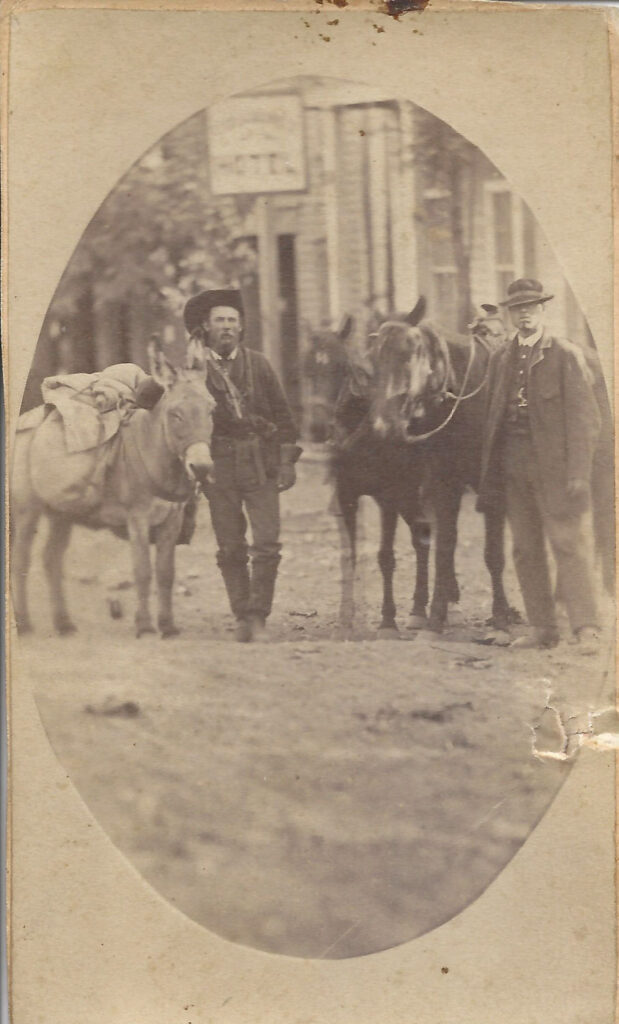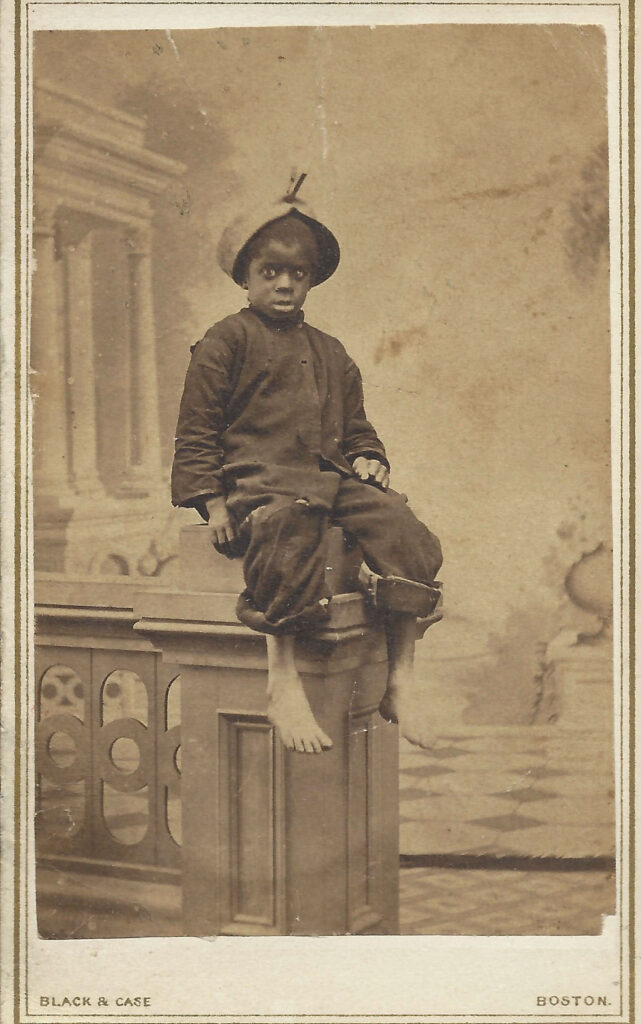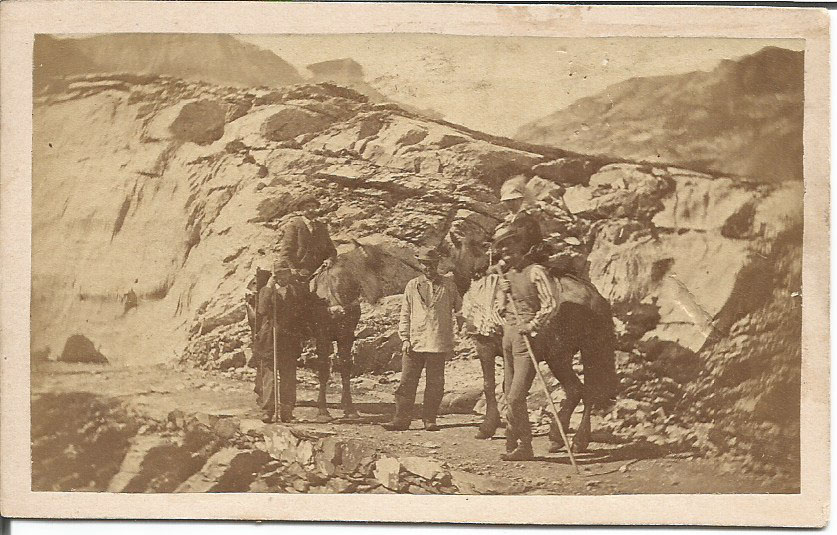Section #13 - The 1850 Compromise has Democrats backing “popular sovereignty” voting instead of a ban
Chapter 146: California Adopts A Free State Constitution To Join The Union And President Polk Say He Will Support It
January 1848 – June 1849
The Gold Rush Propels The Need For A California State Government

From his first day in office, Taylor is acutely aware of the need to organize a sustainable government for California in light of the new settlers flooding in to search for gold.
Word of the initial “find” gradually spreads after the January 24, 1848 discovery of nuggets in the trace water below John Sutter’s sawmill. In August 1848 easterners hear the news in the New York Herald, but it is President Polk’s announcement to Congress on December 5, 1848 that fully fuels the “Forty Niner” stampede.
While the port of San Francisco is the first to experience the transition from a sleepy Spanish mission to an overnight boom town, the entire state is affected by the gold rush. California’s total Caucasian population jumps from roughly 8,000 in 1840 to 120,000 in 1850 and 380,000 by 1860.
In the face of this influx, the duty of maintaining law and order continues to fall on a string of Military Governors on site since the Bear Flag rebellion and the end of the Mexican War in 1847. Their public safety challenges mount daily:
It is clear to every man that San Francisco is partially in the hands of criminals, and that crime has reached a crisis when life and property are in imminent danger. There is no alternative left us but to lay aside our business and direct our whole energies as a people to seek out the abodes of these villains and execute summary vengeance upon them.
President Polk tries several times to have California declared an official Territory during his final year in office, but Congress stalls for two reasons:
- Any move toward statehood will require a decision on whether or not to allow slavery there; and
- That decision will in turn upset the Union’s current 15 Free vs. 15 Slave state balance.
So Taylor is left with this thorny issue, and in true military fashion decides to take it on as quickly as possible.
On April 3, 1849, just a month after his inauguration, he sends sitting Georgia congressman Thomas Butler King to San Francisco to explore the shift from military to civilian rule. King follows the Panama route and arrives there on June 4, to learn that activities are already underway to form a government. Spearheading this effort is General Bennett Riley, the Military Governor who fought under General Scott in the overland drive to take Mexico City.
The day before King arrives, Riley issues a call to elect representatives for a Constitutional Convention to be held on September 1, 1849 – a move that Taylor supports wholeheartedly.
1787 forward
The 1787 Constitution Establishes Rules For Admitting New States To The Union
The steps for admitting new states to the Union are laid out in the Land Ordinance of 1784 and in the Admission to the Union Clause (Article IV, Section 3) of the 1787 Constitution.
- All lands within a new Territory are placed in the “public domain” – i.e. they are owned by the government.
- Congress surveys the land and decides how many new states will be created over time.
- The path to statehood begins when a threshold number of citizens (originally 20,000 and later 60,000 and 93,000) settle in the defined boundaries.
- A representative group of residents convene a Territorial Convention to write a proposed state constitution.
- The State Constitution is submitted to the population at large for an up or down vote.
- If approved, the proposed state sends its Constitution and plans to the U.S. Congress to seek admission.
- The Congress debates the admission and either accepts or rejects it.
- Once admitted, new states are granted “equal footing” with prior states when it comes to rights and laws.
This process is first applied to the “Northwest Territory” lands west of the Appalachian Mountains won from Britain in the Revolutionary War and it works smoothly over time, with seventeen new additions approved, the latest being Wisconsin, in May 1848.
But complexities arise here when the territory involved falls outside of the original Northwest boundaries, to the west of the Mississippi River.
The first case being the Louisiana Purchase territory of Missouri Territory which applies for statehood in 1819 and produces a furor over whether it will enter as a Slave or a Free State. This crisis is solved by the 1820 Missouri Compromise which creates a new boundary line at 36’30.”
The problem with California is that it lies outside of the Louisiana Purchase space – and therefore requires congressional action to determine whether it will be classified as a Slave or Free State. Furthermore, whatever “formula” applies to California will most likely be applied to all of the southwest land ceded from Mexico.
As with Missouri in 1819, California in 1849 once again tests the sectional tensions over slavery, exactly as Andrew Jackson anticipated all along.
When David Wilmot proposes his famous Proviso in 1846 to make the west slave-free, Congressman William Wick tries to pass his plan to extend the 36’30” line all way to the Pacific – but the House fails to go along. The desperate Democrats then turn to “pop sov” (“let the voters decide”) as their only option.
October 13, 1849
California Writes Its Constitution Calling For “Free State” Status
California easily surpasses the population threshold of 20,000 required to write a state constitution and General Riley’s call to hold a convention is met by enthusiasm among the settlers.
On August 1, 1849, a total of 48 delegates are chosen by secret ballot to attend the assembly. Half have lived in the state for an extended time, with twelve residing there for ten or more years and another twelve for at least three years. Their backgrounds are quite diverse, including fourteen lawyers, twelve ranchers, nine merchants, and four military men.
This group gathers on September 1 at Colton Hall in Monterrey and works steadily over 43 days to write the initial constitution, which they sign on October 13.
The final document borrows heavily from the 1787 U.S. Constitution – with several notable exceptions:
For one, California takes the lead in defining its own Territorial boundaries, rather than waiting on Congress to complete this task. Their proposed plat also defines a total of 29 counties.
It offers an expanded Bill of Rights, listing twenty-one in total rather than the usual ten.
Among the additions are calls for a statewide system of public K-12 schools together with a University, all paid in part by local funds. Both single and married women are accorded the right to own and control their own property. A debt limit is established at $300,000.
The Constitution also makes one other declaration that will cause a firestorm in the U.S. Congress – it officially announces its intent to enter as a “Free State.”
Fall 1849
A Proposal To Ban All Blacks Is Debated

The debates over “Free State” status that occur among the California delegates in Monterrey display the intensity of the anti-black racism prevalent across white America at the time.
They are covered in depth by The Californian, a one sheet newspaper popular at the time. It links the proposed ban on slavery to the wish for an all-white population:
We entertain several reasons why slavery should not be introduced here:
- Negroes have equal rights to life, liberty, health, and happiness with the whites.
- It is wrong for slavery to exist anywhere.
- We left the slave states because we didn’t want to bring up our families in miserable conditions.
- There is no excuse for its introduction into this country, by virtue of climate or physical condition.
- We desire only a white population in California.
This is the spirit of David Wilmot’s Proviso writ large – with the “Free State” label now signaling “free of all black residents!”
This notion of an all-white society has surfaced across Northern states from Ohio through Indiana, Michigan, Illinois and Iowa. But it will not be written into a final constitution until 1859 when Oregon is accepted as the nation’s 33rd state.
November 13 To December 4, 1849
Taylor’s Support For “Immediate Admission” Further Alarms The South

On November 13, 1849, one month after completing the final draft, the settlers ratify the California Constitution by a margin of 12,061 in favor vs. 811 opposed.
At the same time, they elect their first civilian governor, forty-two year old Peter Bernett, who migrates west from Missouri to Oregon in 1843. Bernett is drawn to San Francisco by the Sutter gold rush, sets up a law practice there, and wins his race over four other contenders, including John Sutter himself.
From this point on, the military gives way to civilian rule on a permanent basis.
The town of Pueblo de San Jose is chosen as the first state capitol, and elected congressmen begin meeting there on a regular basis to pass legislation.
All that’s left now is for the U.S. Congress to approve the admission of California as a Free State.
On December 4, 1849, the day after the 31th Congress convenes for its opening session, Taylor’s first and only annual message urges them to accept California’s petition without delay:
The people of that Territory…recently met for the purpose of forming a Constitution…and it is believed they will shortly apply for the admission into the Union as a sovereign State. Should such be the case…I recommend their application to the favorable consideration of Congress.
This call by Taylor is another major setback for Southern politicians, Democrats and Whigs alike.
“Their President” – a slave-owning Southern man with three plantations – is coming out against expanding slavery in the west, and also upsetting the 15:15 state balance of power in the Senate in favor of a Free State majority!
He is also doing this without any apparent recognition of the gravity of these decisions on the Southern economy, and without staying neutral until a search for “compromises” can play out in Congress.
This sparks a sense of betrayal among Southerners, and a growing conviction that Taylor is now the pawn of the two anti-slavery New Yorkers — Thurlow Weed and Governor Henry Seward– who led his presidential campaign.